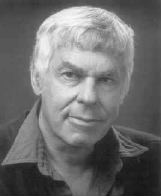

Stephen Smale was born in Flint, Michigan. He attended the University of
Michigan, obtaining his B.S. in 1952 and his M.S. the following year.
Smale continued to work for his doctorate at the University of Michigan, Ann Arbor, and he was awarded his Ph.D. in 1957 for the thesis Regular Curves on Riemannian Manifolds. In his thesis he generalized results proved by Whitney in 1937 for curves in the plane to curves on an
n-dimensional manifold. He became an instructor at the University of Chicago in 1956. He did an NSF postdoctoral fellowship at the Institute for Advanced Study at Princeton from 1958 to 1960. He taught math at the University of California at Berkeley, then at Columbia
University, then returned to a professorship at the University of California at Berkeley where he has spent the main part of his career. He retired from Berkeley in 1995 and took up a post as professor at the City University of Hong Kong.
Smale was awarded a Fields Medal in 1966 for his work on the generalized Poincaré conjecture. This conjecture, one of the famous unsolved problems of twentieth-century mathematics, asserts that a simply connected closed 3-dimensional manifold is a
3-dimensional sphere. Smale showed that any closed n-dimensional manifold which is homotopy equivalent to the n-sphere must be the n-sphere when n is at least 5. Michael Freedman proved the conjecture for n = 4 in 1982 but the original conjecture remains open.
Another area in which Smale has made a very substantial contribution is in Morse theory, which he has applied to multiple integral problems and the generalized Poincaré conjecture.
He also discovered strange attractors, which lead to chaotic dynamical systems.
By the late 1960's, Smale had moved into applications. He modelled physical processes by dynamical systems, opening new lines of inquiry. The n-body problem and electric circuit theory were among the applications that Smale framed in the language of dynamical systems. For much of the 1970's, he focused on economics, injecting topology and dynamics into the study of general economic equilibria. Having established the nature of equilibria, Smale began to think algorithms for their computation. Smale's recent work has been on theoetical computer science. With co-workers Blum and Shub, he has developed a model of computation which includes
both the Turing machine approach and the numerical methods of numerical analysis.
Smale has received many honours for his work. In addition to the Fields Medal. He was awarded the Veblen Prize for Geometry by the American Mathematical Society in 1966 for his contributions to various aspects of differential topology.
In 1996, Smale received the National Medal of Science.